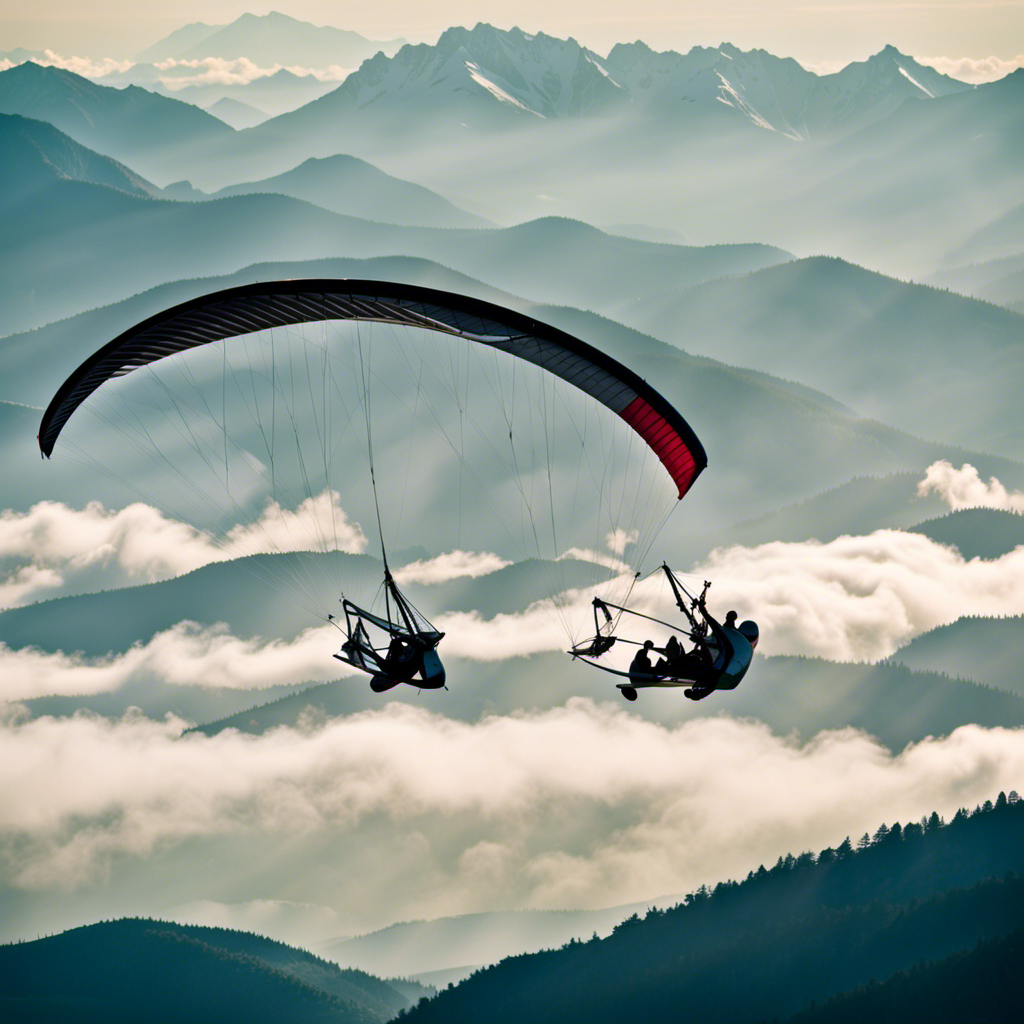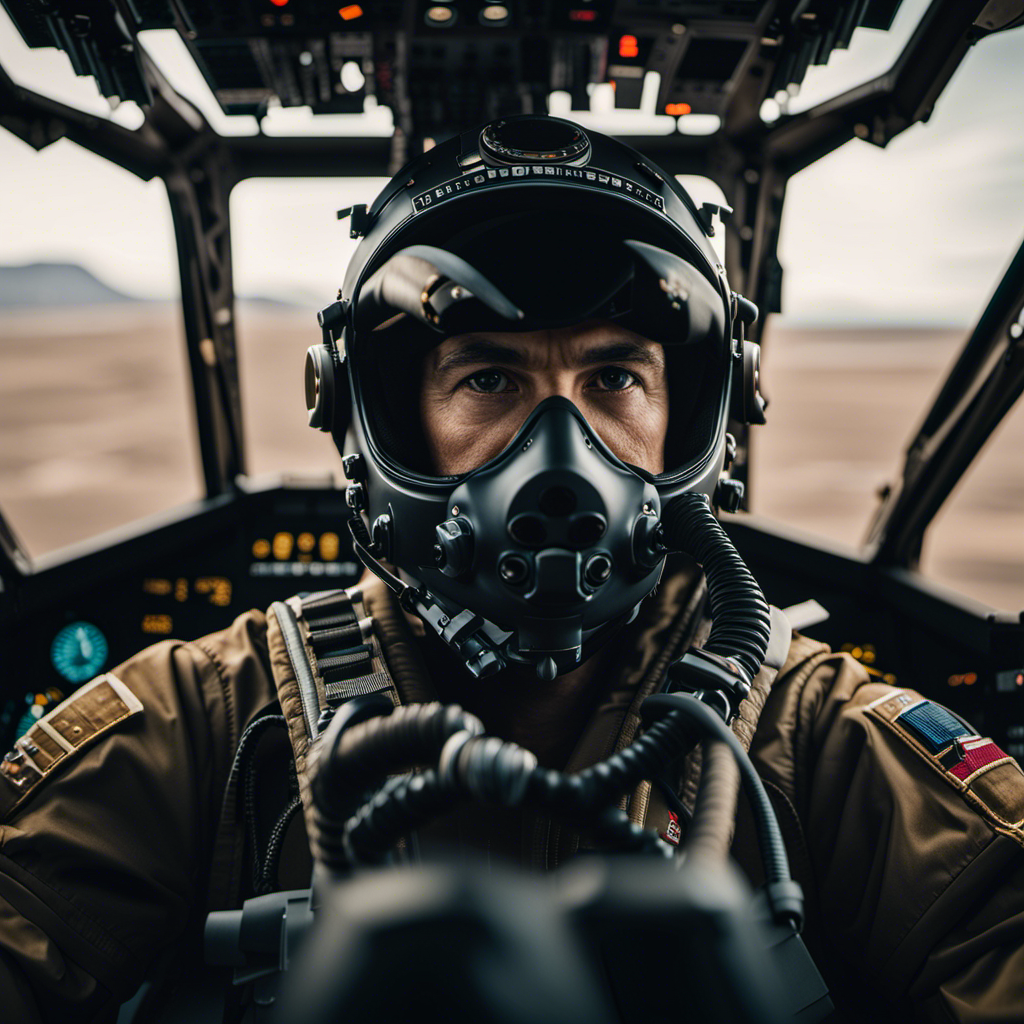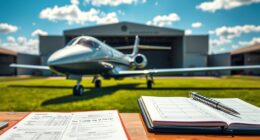Considering hang gliding? Well, a hang glider’s cost can really soar.
But fear not, my friend, because in this article, we’ll explore what influences the cost of hang gliders.
From the types available to the materials used in their construction, as well as the level of experience and skills needed, we’ll dive into the factors that can make or break your budget.
So buckle up and get ready to soar through the world of hang glider prices!
Key Takeaways
- The types of hang gliders available, including beginner gliders and advanced gliders, influence the cost.
- The materials used in hang glider construction, such as aluminum, carbon fiber, and fabric, affect the price.
- The level of experience and skills needed, including training duration and physical fitness, can impact the cost.
- Additional equipment and accessories, such as harnesses, helmets, and reserve parachutes, can contribute to the overall price of hang gliding equipment.
Types of Hang Gliders Available
There’s a wide variety of hang gliders available on the market. When it comes to choosing the right hang glider, it’s important to consider the materials used and your level of experience.
Hang gliders are typically constructed using lightweight materials like aluminum alloy frames and durable, ripstop nylon sails. These materials provide strength and flexibility, allowing for a safe and enjoyable flight.
The level of experience also plays a crucial role in selecting the appropriate hang glider. Beginner gliders are designed with stability and ease of control in mind, making them ideal for those new to the sport. On the other hand, advanced gliders are built for experienced pilots who are looking for increased performance and maneuverability.
Understanding the different types of hang gliders available and considering your own skill level will help you make an informed decision.
Now, let’s delve into the materials used in hang glider construction.
Materials Used in Hang Glider Construction
To keep the cost down when buying a hang glider, you’ll want to consider the materials used in its construction. Hang gliders are typically made using a combination of aluminum, carbon fiber, and fabric.
Aluminum is commonly used for the frame due to its lightweight and durable properties. Carbon fiber is utilized in areas that require extra strength and rigidity, such as the leading edge and control frame. The fabric used for the wing and sail is usually made of ripstop nylon, which is lightweight, tear-resistant, and offers good aerodynamic performance.
In terms of construction techniques, hang gliders are often built using a combination of welding, bonding, and sewing. These techniques ensure that the hang glider is strong and reliable.
Understanding the different materials and construction techniques used in hang gliders will help you make an informed decision when considering the cost and quality of a hang glider.
When it comes to hang gliding, the level of experience and skills needed are crucial aspects to consider.
Level of Experience and Skills Needed
When considering hang gliding, it’s important to take into account the level of experience and skills required. Here are some key factors to consider:
-
Training duration: Learning to hang glide requires a significant investment of time. It typically takes several weeks or even months of dedicated training to acquire the necessary skills and knowledge.
-
Skill acquisition: Hang gliding demands a range of skills, including launching, controlling, and landing the glider. Pilots must also learn how to read weather conditions, navigate airspace, and make quick decisions to ensure their safety.
-
Physical fitness: Hang gliding requires a certain level of physical fitness and strength. Pilots need to have good upper body strength and endurance to handle the glider and maintain control during flight.
-
Mental preparation: Hang gliding involves a certain level of risk, so pilots must be mentally prepared to handle unexpected situations. This includes remaining calm and making quick decisions under pressure.
-
Experience level: Hang gliding is a skill that is built over time. As pilots gain more experience, they become more proficient in their flying abilities and are able to handle more challenging conditions.
Considering these factors, it is clear that hang gliding requires a significant commitment of time and effort to acquire the necessary skills.
In the next section, we will discuss the additional equipment and accessories needed for this exhilarating sport.
Additional Equipment and Accessories
Hang gliding requires a variety of additional equipment and accessories to ensure safety and enhance the overall experience. These additional pieces of equipment are crucial for a successful and enjoyable hang gliding adventure.
One of the most important accessories is the harness, which is designed to securely attach the pilot to the glider. A well-fitted helmet is also essential to protect the head from potential injuries. Additionally, a reserve parachute is highly recommended as a precautionary measure in case of emergencies.
Other accessories, such as gloves, boots, and goggles, provide enhanced comfort and protection. It is important to invest in high-quality equipment and accessories that are specifically designed for hang gliding to ensure optimal performance and safety.
Transitioning into the next section, the choice of brand and manufacturer plays a significant role in determining the overall cost of hang gliding equipment.
Brand and Manufacturer
When it comes to hang gliders, there are a few popular brands that enthusiasts swear by. These brands have built a reputation for producing high-quality gliders that are known for their performance and durability.
Additionally, for those seeking a truly personalized experience, custom-made hang gliders offer the opportunity to have a glider specifically tailored to their individual needs and preferences.
Popular Hang Glider Brands
You might be interested in knowing that popular hang glider brands heavily influence the cost. When it comes to cost comparison and budgeting, it is important to consider the brand of the hang glider you are interested in.
Here are a few popular hang glider brands that have a significant impact on the price:
-
Brand X: Known for their high-performance hang gliders, Brand X offers cutting-edge technology and innovative designs, making them a top choice for experienced pilots.
-
Brand Y: With a reputation for durability and reliability, Brand Y is favored by beginners and intermediate pilots. Their hang gliders are known for their ease of use and stability in flight.
-
Brand Z: Renowned for their craftsmanship and attention to detail, Brand Z produces high-quality hang gliders that offer a smooth and enjoyable flying experience.
Considering these popular brands can help you make an informed decision when comparing prices and planning your budget for a new hang glider.
Moving forward, let’s explore the world of custom-made hang gliders.
Custom-Made Hang Gliders
If you’re looking for a unique flying experience, opting for a custom-made hang glider can be a great choice. Custom made hang gliders offer the opportunity to have a glider tailored to your specific needs and preferences.
While there are many options available in the second hand hang glider market, a custom-made glider ensures that you get exactly what you want. These gliders are designed and built with precision, taking into account factors such as your weight, flying style, and skill level. By working closely with a manufacturer, you can choose the materials, wing shape, and other specifications that suit you best.
This level of customization can greatly enhance your flying experience, providing you with a glider that is perfectly suited to your abilities and preferences.
Speaking of customization, let’s now explore the importance of size and weight capacity in a hang glider.
Size and Weight Capacity
I’ve had the opportunity to fly both single-seater hang gliders and tandem hang gliders, and I can attest to the distinct advantages and considerations for each.
Single-seater hang gliders offer the pilot complete control and freedom, allowing for a more agile and responsive flying experience.
On the other hand, tandem hang gliders provide an excellent opportunity for instructional purposes, as an instructor can fly with a student and guide them through the flight.
Additionally, tandem hang gliders can accommodate heavier weight capacities, making them suitable for flying with a partner or carrying extra equipment.
Single-Seater Hang Gliders
The cost of single-seater hang gliders can be influenced by factors such as materials and design. More advanced and high-performance gliders tend to be more expensive due to their complex design and specialized materials. Safety features also play a significant role in determining the cost. Advanced safety systems, such as emergency parachutes and reinforced structures, increase the price. These features are essential for the pilot’s well-being and minimizing the risk of accidents.
Moving on to tandem hang gliders, it is worth noting that these two-seater gliders differ in design and functionality, which can also impact their cost.
Tandem Hang Gliders
When considering tandem hang gliders, you’ll find that their design and functionality greatly affect their overall value. Tandem hang gliders are designed to carry two people, allowing for a shared flying experience. This type of glider offers several benefits, such as the opportunity for beginner pilots to learn from more experienced ones, or for friends and partners to enjoy the thrill of flying together.
Tandem flying also promotes safety, as there is an additional person to assist in case of emergencies. The design of tandem hang gliders incorporates reinforced structures and larger wingspans to accommodate the extra weight and provide stability. Additionally, the functionality of tandem gliders includes adjustable harnesses and controls for both pilots. These features enhance the flying experience and make it accessible to a wider range of individuals.
Moving on to maintenance and repairs…
Maintenance and Repairs
Regular maintenance and repairs can greatly impact the overall cost of owning a hang glider. It’s important to understand the maintenance costs and be prepared for common repairs that may arise. To give you a clear picture, here is a breakdown of the typical maintenance costs and common repairs associated with hang gliders:
| Maintenance Costs | Common Repairs |
|---|---|
| Annual inspection | Sail tears |
| Replacement parts | Cable replacement |
| Cleaning supplies | Frame repairs |
By regularly inspecting your hang glider, you can catch small issues before they become big problems. Sail tears are a common repair, especially if you fly in rough conditions. Cable replacement is necessary over time due to wear and tear. Frame repairs may be needed if there is any damage to the structure. Being aware of these maintenance costs and common repairs can help you budget and plan accordingly.
When it comes to training and certification, it is vital to have the proper knowledge and skills to safely operate a hang glider.
Training and Certification
When it comes to hang gliding, proper training and certification are essential for safety and success. Hang gliding lessons and courses provide the necessary knowledge and skills to master the sport.
Additionally, licensing and certification requirements ensure that pilots meet certain standards and can handle the challenges that come with flying a hang glider.
Hang Gliding Lessons and Courses
Hang gliding lessons and courses can greatly impact the overall cost of getting into the sport. Proper instruction is essential for safety and to ensure a smooth learning process. Here are three key aspects to consider:
-
Safety Measures: Hang gliding lessons prioritize safety and teach you essential safety measures. You will learn about pre-flight checks, equipment maintenance, and emergency procedures. This knowledge is crucial for a safe and enjoyable hang gliding experience.
-
Physical Fitness Benefits: Hang gliding is not just about flying; it also offers significant physical fitness benefits. During lessons and courses, you will engage in physical activities like launching, landing, and maneuvering the glider. This helps improve cardiovascular fitness, strength, and coordination.
-
Skill Development: Lessons and courses provide structured training to develop your hang gliding skills. You will learn techniques for takeoff, landing, turning, and soaring. Instructors will guide you through progressive exercises to build your confidence and proficiency in flying.
Understanding the importance of hang gliding lessons and courses is crucial for anyone looking to enter the sport. It lays the foundation for a safe and rewarding journey.
Moving forward, it is important to explore the licensing and certification requirements necessary to become a proficient hang glider pilot.
Licensing and Certification Requirements
To become a proficient hang glider pilot, you’ll need to meet specific licensing and certification requirements. These requirements are in place to ensure that pilots have the necessary skills and knowledge to safely operate a hang glider.
The licensing process typically involves completing a certain number of logged flight hours, passing written and practical exams, and demonstrating proficiency in various flight maneuvers. Additionally, pilots may need to obtain a medical certificate to ensure they are physically fit to fly. The certification process is administered by national hang gliding associations or governing bodies, which set the standards and guidelines for obtaining a pilot’s license.
By adhering to these licensing requirements and successfully completing the certification process, aspiring hang glider pilots can demonstrate their competence and readiness to take to the skies.
Transitioning to the subsequent section about the ‘second-hand hang glider market,’ it is important to note that once you have obtained your license and certification, you may consider purchasing your own hang glider.
Second-Hand Hang Glider Market
If you’re looking to buy a second-hand hang glider, you’ll find that the market offers a wide range of options to choose from. The second-hand hang glider market is a bustling arena, with numerous sellers and buyers exchanging equipment every day.
This market is influenced by several factors that affect the affordability of these gliders. The age, condition, and brand of the hang glider are some of the key factors that determine its price. Older models or those in need of repairs may be more affordable, while newer and well-maintained gliders tend to have higher price tags. Additionally, the availability of spare parts and the overall demand for certain models can also impact the cost.
Understanding these factors can help you make an informed decision when purchasing a second-hand hang glider.
Moving on to cost comparison and budgeting, it is essential to consider various aspects before finalizing your purchase.
Cost Comparison and Budgeting
When considering the price range of hang gliders, it’s important to take into account various factors such as brand, materials used, and level of performance.
Hang gliders can range in price from a few thousand dollars for entry-level models to tens of thousands of dollars for high-end, competition-grade gliders.
Additionally, there are additional expenses to consider such as harnesses, helmets, and maintenance costs, which should be factored into your budget when planning to purchase a hang glider.
Price Range of Hang Gliders
You can expect hang gliders to vary in price depending on factors such as materials used, size, and additional features. When considering the cost of a hang glider, it’s important to analyze these factors to make an informed decision. Here are some key points to consider:
-
Materials: The type of materials used in the construction of a hang glider can greatly impact its price. Lightweight, high-quality materials such as carbon fiber will generally result in a higher cost.
-
Size: Hang gliders come in a range of sizes, from smaller recreational models to larger competition-grade gliders. The size you choose will affect the price, with larger gliders typically being more expensive.
-
Additional Features: Certain features, such as aerodynamic enhancements or advanced safety systems, can add to the overall cost of a hang glider.
-
Brand Reputation: Hang gliders from well-known brands with a strong reputation for quality and performance often come with a higher price tag.
Considering these factors will help you determine the price range that fits your budget and needs. However, it’s important to note that there are also additional expenses to consider, which we will explore in the next section.
Additional Expenses to Consider
One factor that can impact the overall price of a hang glider is the inclusion of additional features. While the base price of a hang glider may seem reasonable, it is important to consider the potential additional expenses and hidden costs that can arise. These expenses can vary depending on the specific features and options chosen. To illustrate this, consider the following table:
| Additional Features | Estimated Cost |
|---|---|
| Upgraded sail material | $500 |
| Reserve parachute | $800 |
| Electric variometer | $300 |
As you can see, these additional features can quickly add up and significantly impact the final price of a hang glider. It is essential to carefully consider these expenses and factor them into your budget when making a purchasing decision. By being aware of the potential hidden costs, you can make a more informed choice and ensure that you are getting the best value for your money.
Frequently Asked Questions
Are hang gliders safe for beginners?
Hang gliders are safe for beginners when proper beginner’s training and safety precautions are followed. Training focuses on learning to control the glider, understanding weather conditions, and emergency procedures. Safety measures include wearing protective gear and regularly inspecting equipment.
How long does a hang glider typically last before needing replacement?
Hang gliders, with proper hang glider maintenance, can last for several decades before needing replacement. The average lifespan of hang gliders is impressive, making them a reliable choice for enthusiasts and professionals alike.
Are there any specific regulations or laws regarding hang gliding?
There are specific regulations and laws that govern hang gliding. These regulations ensure the safety of participants and cover areas such as flight restrictions, equipment requirements, and pilot certification.
Can hang gliders be customized or modified to fit individual preferences?
Hang gliders can be customized and modified to fit individual preferences. For example, some pilots prefer adding extra padding for comfort, while others may modify the control system to improve maneuverability.
Are there any insurance options available for hang gliders?
There are insurance options available for hang gliders. Insurance coverage is essential to protect against potential accidents or damages. Safety precautions should always be taken into consideration to ensure a secure and worry-free hang gliding experience.
Conclusion
In conclusion, the cost of a hang glider is influenced by various factors.
The type of hang glider, materials used, and additional equipment all contribute to the overall price. The brand and manufacturer also play a role, as well as the level of experience and skills needed to operate the glider.
Maintenance and repairs, training and certification, and the second-hand market are all aspects to consider when budgeting for a hang glider.
By understanding these factors, one can make an informed decision and invest in the right hang glider for their needs.
Orion, better known as “Jetstream,” is the voice that brings the stories of the skies to life. His fascination with aviation began at a young age, sparked by his father’s tales of flying and adventure. Orion’s journey into the world of gliding was serendipitous, and from the moment he took his first glider flight, he knew he had found his calling.










